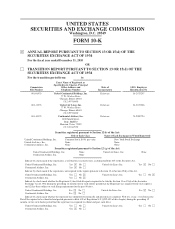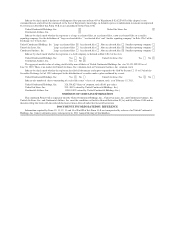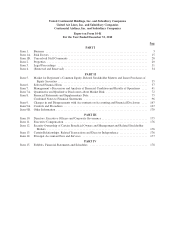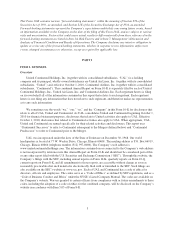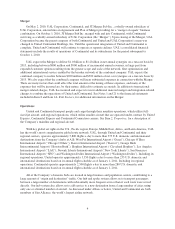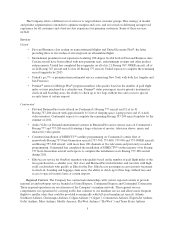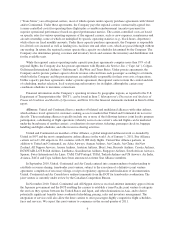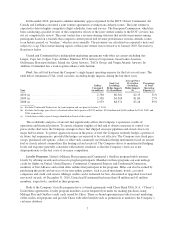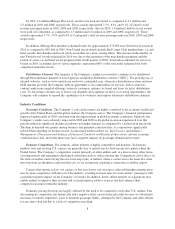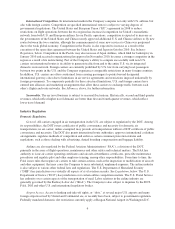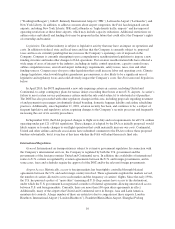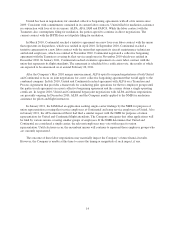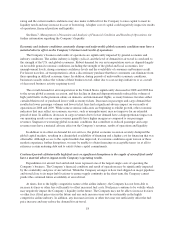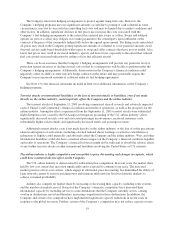United Airlines 2010 Annual Report Download - page 11
Download and view the complete annual report
Please find page 11 of the 2010 United Airlines annual report below. You can navigate through the pages in the report by either clicking on the pages listed below, or by using the keyword search tool below to find specific information within the annual report.International Competition. In international markets the Company competes not only with U.S. airlines, but
also with foreign carriers. Competition on specified international routes is subject to varying degrees of
governmental regulations. The United States and European Union (“EU”) agreement in 2008 to reduce
restrictions on flight operations between the two regions has increased competition for United’s transatlantic
network from both U.S. and European airlines. In our Pacific operations, competition is expected to increase as
the governments of the United States and China recently approved additional U.S. and Chinese airlines to fly new
routes between the two countries, although the commencement of some new services to China was postponed
due to the weak global economy. Competition in the Pacific is also expected to increase as a result of the
execution of the open skies agreement between the United States and Japan in October 2010. See Industry
Regulation, below. Competition in the Pacific may also increase if Japan Airlines, which filed for bankruptcy in
January 2010 and received reorganization plan approval in November 2010, becomes a stronger competitor in the
region as a result of its restructuring. Part of the Company’s ability to compete successfully with non-U.S.
carriers on international routes is its ability to generate traffic from and to the entire U.S. via its integrated
domestic route network. Foreign carriers are currently prohibited by U.S. law from carrying local passengers
between two points in the U.S. and the Company experiences comparable restrictions in many foreign countries.
In addition, U.S. carriers are often constrained from carrying passengers to points beyond designated
international gateway cities due to limitations in air service agreements and restrictions imposed unilaterally by
foreign governments. To compensate partially for these structural limitations, U.S. and foreign carriers have
entered into alliances and marketing arrangements that allow these carriers to exchange traffic between each
other’s flights and route networks. See Alliances, above, for further information.
Seasonality. The air travel business is subject to seasonal fluctuations. Historically, second and third quarter
revenues, which reflect higher travel demand, are better than first and fourth quarter revenues, which reflect
lower travel demand.
Industry Regulation
Domestic Regulation.
General. All carriers engaged in air transportation in the U.S. are subject to regulation by the DOT. Among
its responsibilities, the DOT issues certificates of public convenience and necessity for domestic air
transportation; no air carrier, unless exempted, may provide air transportation without a DOT certificate of public
convenience and necessity. The DOT also grants international route authorities, approves international codeshare
arrangements, regulates methods of competition and enforces certain consumer protection statutes and
regulations, such as those dealing with advertising, denied boarding compensation and baggage liability.
Airlines are also regulated by the Federal Aviation Administration (“FAA”), a division of the DOT,
primarily in the areas of flight operations, maintenance and other safety and technical matters. The FAA has
authority to issue air carrier operating certificates and aircraft airworthiness certificates, prescribe maintenance
procedures and regulate pilot and other employee training, among other responsibilities. From time to time, the
FAA issues rules that require air carriers to take certain actions, such as the inspection or modification of aircraft
and other equipment, that may cause the Company to incur substantial, unplanned expenses. The airline industry
is also subject to various other federal laws and regulations. The U.S. Department of Homeland Security
(“DHS”) has jurisdiction over virtually all aspects of civil aviation security. See Legislation, below. The U.S.
Department of Justice (“DOJ”) has jurisdiction over certain airline competition matters. The U.S. Postal Service
has authority over certain aspects of the transportation of mail. Labor relations in the airline industry are
generally governed by the Railway Labor Act (“RLA”). The Company is also subject to inquiries by the DOT,
FAA, DOJ and other U.S. and international regulatory bodies.
Airport Access. Access to landing and take-off rights, or “slots,” at several major U.S. airports and many
foreign airports served by United and Continental are, or recently have been, subject to government regulation.
Federally mandated domestic slot restrictions currently apply at Reagan National Airport in Washington D.C.
9

